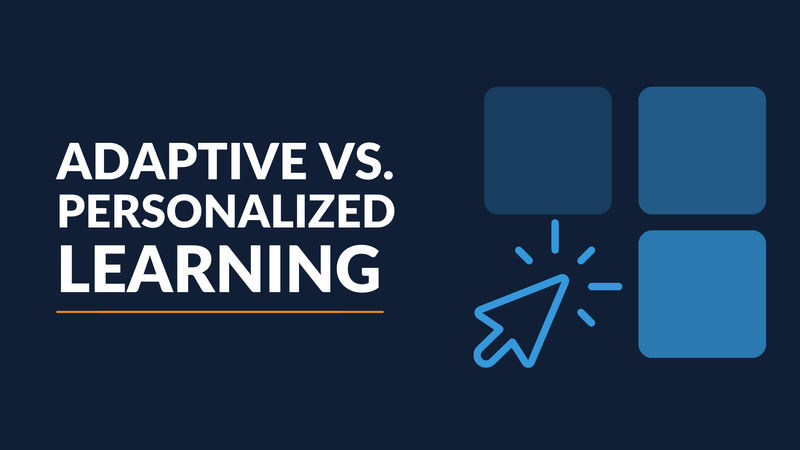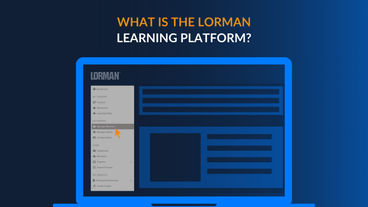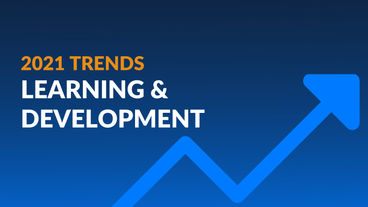
Adaptive Learning vs. Personalized Learning
Posted on 10/01/20 By Lorman Team
Imagine you invest in an online mathematics course that promises to sharpen your skills and make you a better mathematician. Although you felt hopeful when purchasing the course, you soon find that other learners are not as advanced in the subject matter as you. You came to study trigonometry, but the instructor is making you practice multi-digit multiplication.
Or maybe you joined the course hoping to work on your times tables, but the instructor is now quizzing you on advanced trig functions.
No two people have the same learning style, nor do they have the same amount of time and resources to dedicate to continuing education. One-size-fits-all approaches to education often neglect the unique requirements of each learner.
Different techniques, such as adaptive and personalized learning, have been developed to help combat blanket curriculums that fail to adapt to individual learning styles.
Although the terms are often used interchangeably, adaptive learning and personalized learning approach the instructor-learner relationship in different ways.

What is Adaptive Learning?
Adaptive learning is a tech-based learning system that leverages artificial intelligence (AI) algorithms to adapt to an individual learner's style and speed of progress. It works similarly to the smart algorithms that recommend products on websites like Amazon and is seen as useful to both teachers and students.
Adaptive learning is meant to provide real-time feedback and keep the learner in the right "zone" for optimum mastery, where the material is neither too easy nor too hard.
In theory, adaptive learning allows a learner to keep learning at their own pace without any further input from teachers or course designers. It should also switch the learner to content in formats that work well for them, based not only on their own initial inputs but on gathering data that helps demonstrate retention of information and attention.
It takes work load off of teachers and instructors, putting it instead on technology and automation.
The end goal is to guide the learner through the course with minimal wasted time and maximum retention of required information. It sounds like something that benefits teachers and learners alike, but there are numerous issues with adaptive learning as it currently stands.
Problems with Adaptive Learning
Adaptive learning sounds like an ideal solution, especially in professional development, where students enter a course with a wide variety of learning styles, learning goals, and prior knowledge.
However, adaptive learning has been shown to have a variety of problems. The largest issue is that AI systems are simply not yet ready to handle this type of ever-adjusting and evolving system without human input.
Examples of AI errors show up all over the place. In March of this year, an unattended Facebook AI program "decided" to mark every post about COVID-19 as spam, issuing warnings to users and causing a flurry of bad publicity.
If AIs cannot moderate online platforms without input from humans, then they are certainly not ready to manage an entire learning program. If the system goes wrong then it is likely to steer a student down a frustrating dead end or, potentially, reinforce existing dangerous biases.
Or adaptive learning programs could crash altogether, leaving learners in the lurch.
There are other problems with adaptive learning that have come out as companies and schools experiment with it, including:
- AI systems gather a lot of personal data, raising privacy concerns.
- Some methods for measuring student learning and attention without human input end up discriminating against, or working poorly for, students with certain disabilities (measuring eye contact is particularly problematic).
- The technology can crash or cease to function and may require technical knowledge on the part of the student to get it working.
- A purely adaptive and automated approach can lose the human connection.
- Limited adaptivity, which is all that is generally available, can result in insecurity.
- Gathering the data may involve a lot of tests, quizzes, and games, which some users may find distracting, or which may leave them feeling as if they are being led through a maze.
- In some cases, the learner misses information which would have been valuable to them because the system received an inaccurate report on prior knowledge.
All of this means that while adaptive learning might be a useful tool in certain circumstances, it has far too many limitations to be relied on as the primary means of providing personalization in learning.
Although the future of learning and development is online, it is clear that artificial learning systems are not sophisticated enough to replace a real instructor.

What Is Personalized Learning?
To get an idea of what personalized learning is, let's imagine a situation in which the instructor does not apply a "one size fits all" approach to education. Therefore, he teaches a different lesson to every learner, depending on their strengths, interests, needs, and skills. The same course may take one person a month to complete but another three months.
By letting the learner determine the pace at which she wants to advance, the teacher is letting her take ownership of her study.
For adults looking for opportunities to increase their skills and advance in their career, there are many forms of personalized learning available:
- Individual eLearning modules in which you complete what you want and learn on your own.
- MOOCs (Massive Open Online Courses), or massive open online lectures that allow unlimited participation.
- Virtual Instructor-Led Training (VILT), or training that is delivered through a virtual environment when the instructor and learner are in separate locations.
Just as every person learns differently, every personalized learning course functions in a unique way.
Learners generally seek online courses that mirror traditional in-person classrooms, where they can listen in on a lecture but also have the ability for discourse. Because of this, virtual instructor-led training is the most preferred form of personalized learning.
Benefits of Virtual Instructor-Led Training (VILT)
Virtual Instructor-Led Training (VILT) is superior to other forms of personalized learning formats in many ways because the programs allow students to truly complete the course the way they want without making them feel isolated. VILT brings together interactive learning, discussion, and collaboration to make digital learning as similar to in-person learning as possible.
VILT is conducted in real-time by an instructor who connects with learners remotely through a content platform which comes with additional features to facilitate learning. Live lessons can be recorded so students may play it back anytime. This on-demand feature allows learners to reference course material when applying new knowledge to real situations.
VILT provides even more benefits that cannot be found in other eLearning methods.
Below are some of the highlighted advantages of VILT programs.
- Accessible Anytime, Anywhere
No matter where you are, as long as you have internet access and a computer or smartphone, you can attend online training sessions.
For big corporations with offices nation- or world-wide, this could speed up training time and associated costs. Employees no longer have to travel to be in one place for training but will still receive topnotch guidance from subject matter experts.
- Suitable for Different Learning Styles
It is thought that there are three main kinds of learning styles: auditory (learn by listening), visual (learn by watching), and kinesthetic (learn by doing).
With VILT, individuals with different learning styles can find a format that suits them best. Those with an auditory style can listen to the lesson. Those who prefer visuals can watch it. And those with a kinesthetic style can absorb knowledge by interacting with the instructor further.
- One-to-One Interaction and Group Discussion
While MOOCs may have the disadvantage of making the learner feel isolated and on his own, VILT programs overcome this setback with live lessons.
Participants can easily interact with the instructor, ask questions, and receive instant answers. The instant gratification coming from getting real-time answers and interacting with other learners makes learning more engaging.
- Get Real-Life Examples from Subject-Matter Experts
The problem universities and traditional education systems face is that many of their course materials are obsolete. Even worse, some institutions are understaffed, meaning courses are led by instructors who are not specialists on the topic.
Virtual instructor-led training solves this problem. Industry experts can dedicate time to creating comprehensive online courses in their niche. While instructing, subject-matter experts tend to give real-life examples that are more beneficial for learners than the textbook examples you find in a typical MOOC or eLearning module.

Adaptive vs. Personalized Learning: The Results
Both personalized and adaptive learning share the same goal: to deliver quality education to learners in a format that best accommodates their individual needs.
But the truth is, personalized learning is truly bespoke and remains the most trusted way to customize a personal learning plan.
Related Articles
Are you searching for the best online learning platform for your employee training? Then keep reading to get the lowdown on the Lorman Learning Platform.
L&D is changing but there are some things you can always count on. Here are the top 6 learning and development trends you can expect to see in 2021.
Sexual harassment is a far-too-common occurrence in the workplace. Research shows that about 43% of men and more than 80% of women have been victims of sexual harassment at work. Learn how you can combat harassment at your organization.



